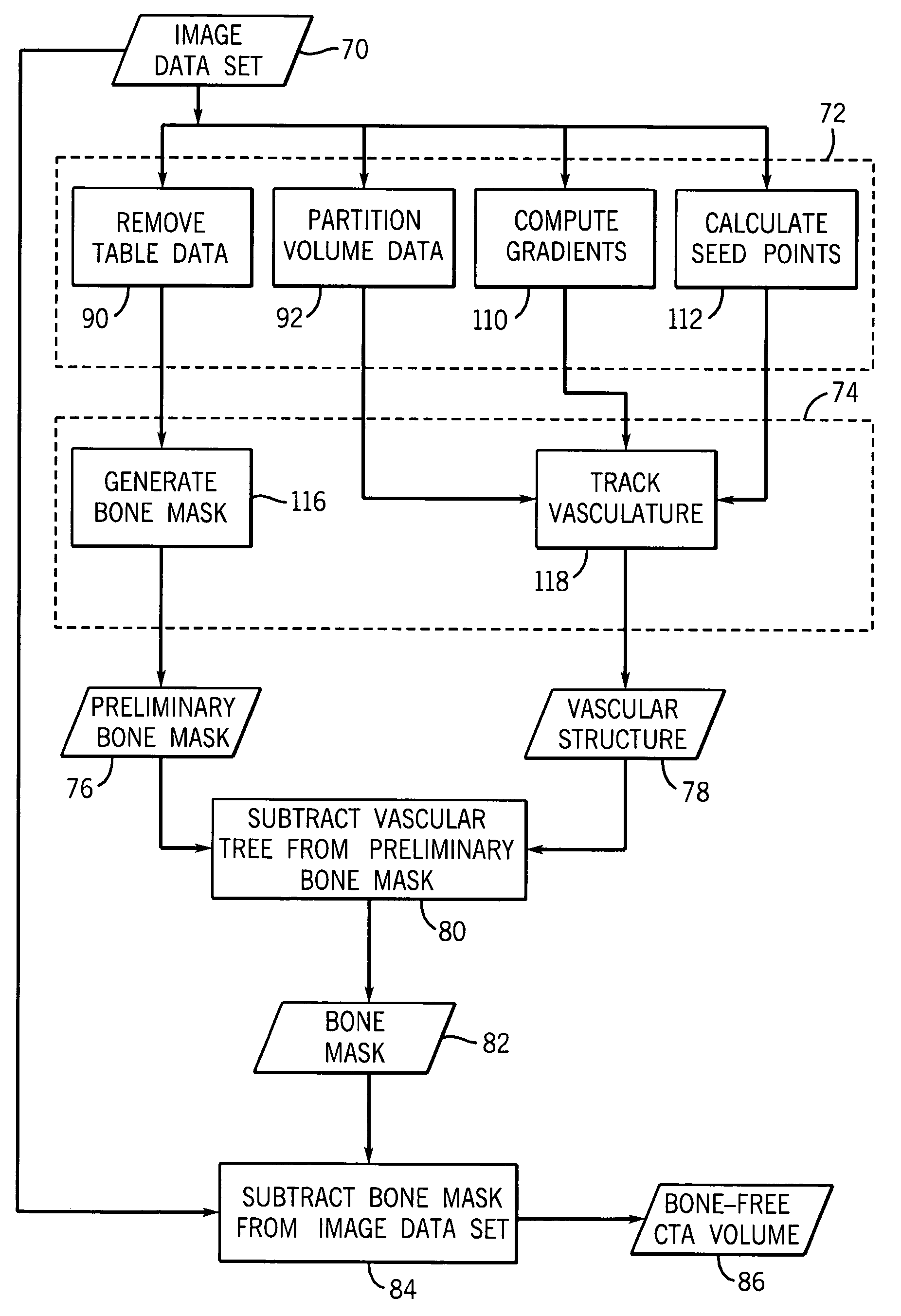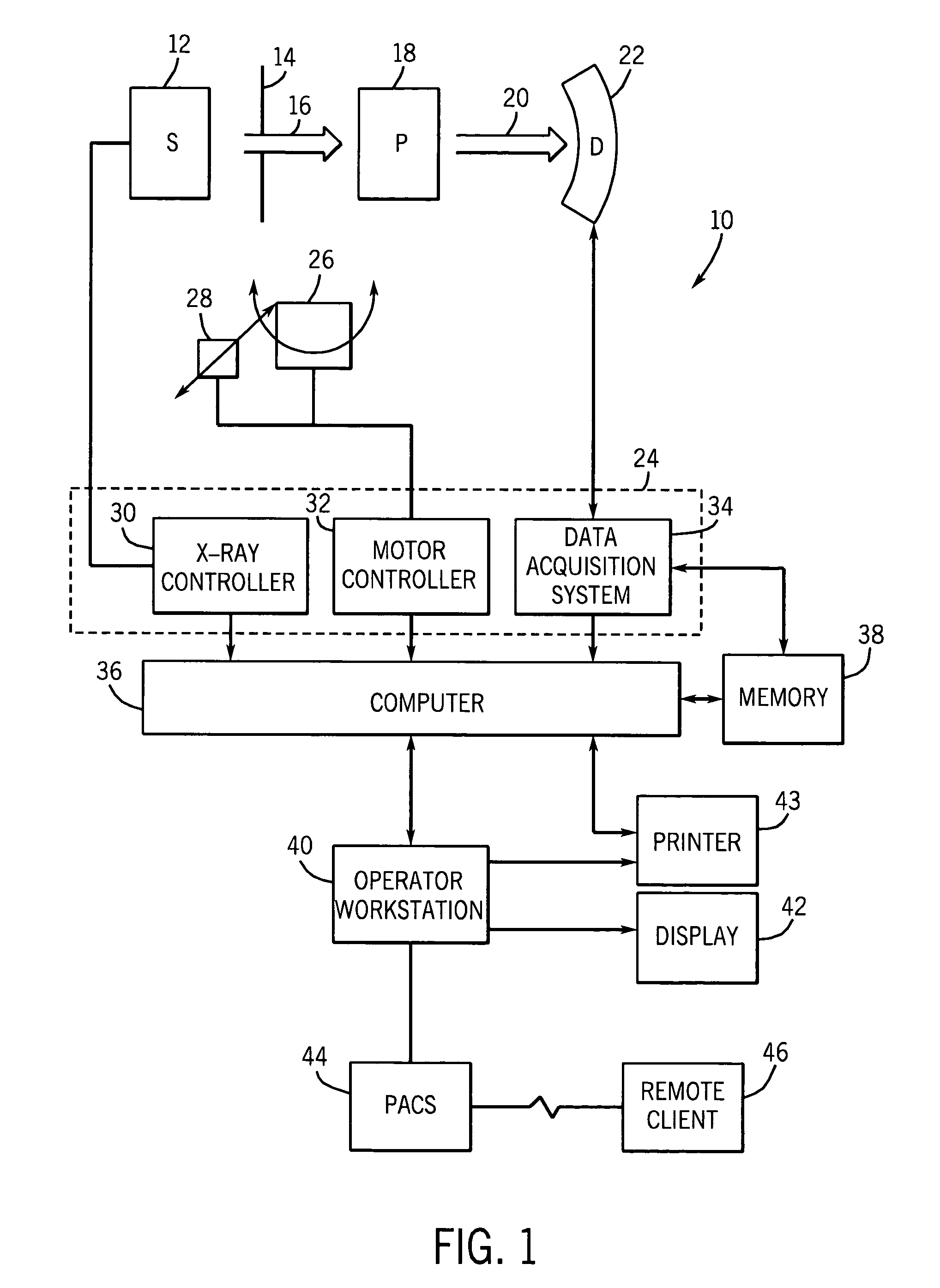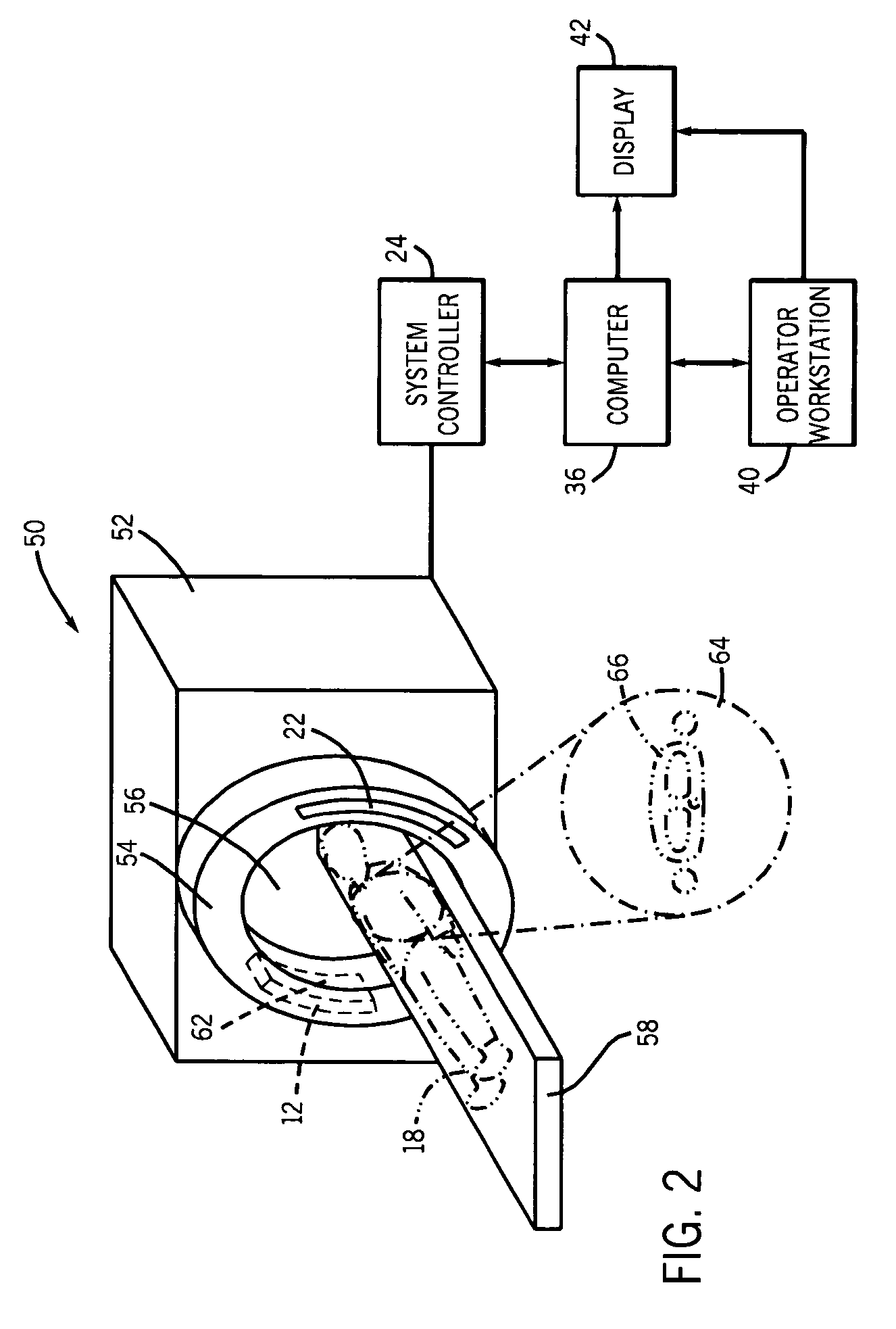Method and apparatus for segmenting structure in CT angiography
a technology of computed tomography and segmentation structure, applied in the field of medical imaging, can solve the problems of difficult identification and segmentation of bone and vascular structures, inability to segment the structure, etc., and achieve the effect of facilitating the segmentation of the structur
- Summary
- Abstract
- Description
- Claims
- Application Information
AI Technical Summary
Benefits of technology
Problems solved by technology
Method used
Image
Examples
Embodiment Construction
[0016]FIG. 1 illustrates diagrammatically an imaging system 10 for acquiring and processing image data. In the illustrated embodiment, system 10 is a computed tomography (CT) system designed both to acquire original image data and to process the image data for display and analysis in accordance with the present technique. Other imaging modalities which acquire image data for a volume, such as magnetic resonance imaging (MRI) or positron emission tomography (PET), may also benefit from the present techniques. The following discussion of CT systems is merely an example of one such implementation and is not intended to be limiting in terms of modality or anatomy.
[0017]In the embodiment illustrated in FIG. 1, imaging system 10 includes a source of X-ray radiation 12 positioned adjacent to a collimator 14. In this exemplary embodiment, the source of X-ray radiation source 12 is typically an X-ray tube. Collimator 14 permits a stream of radiation 16 to pass into a region in which a subjec...
PUM
 Login to View More
Login to View More Abstract
Description
Claims
Application Information
 Login to View More
Login to View More - R&D
- Intellectual Property
- Life Sciences
- Materials
- Tech Scout
- Unparalleled Data Quality
- Higher Quality Content
- 60% Fewer Hallucinations
Browse by: Latest US Patents, China's latest patents, Technical Efficacy Thesaurus, Application Domain, Technology Topic, Popular Technical Reports.
© 2025 PatSnap. All rights reserved.Legal|Privacy policy|Modern Slavery Act Transparency Statement|Sitemap|About US| Contact US: help@patsnap.com



